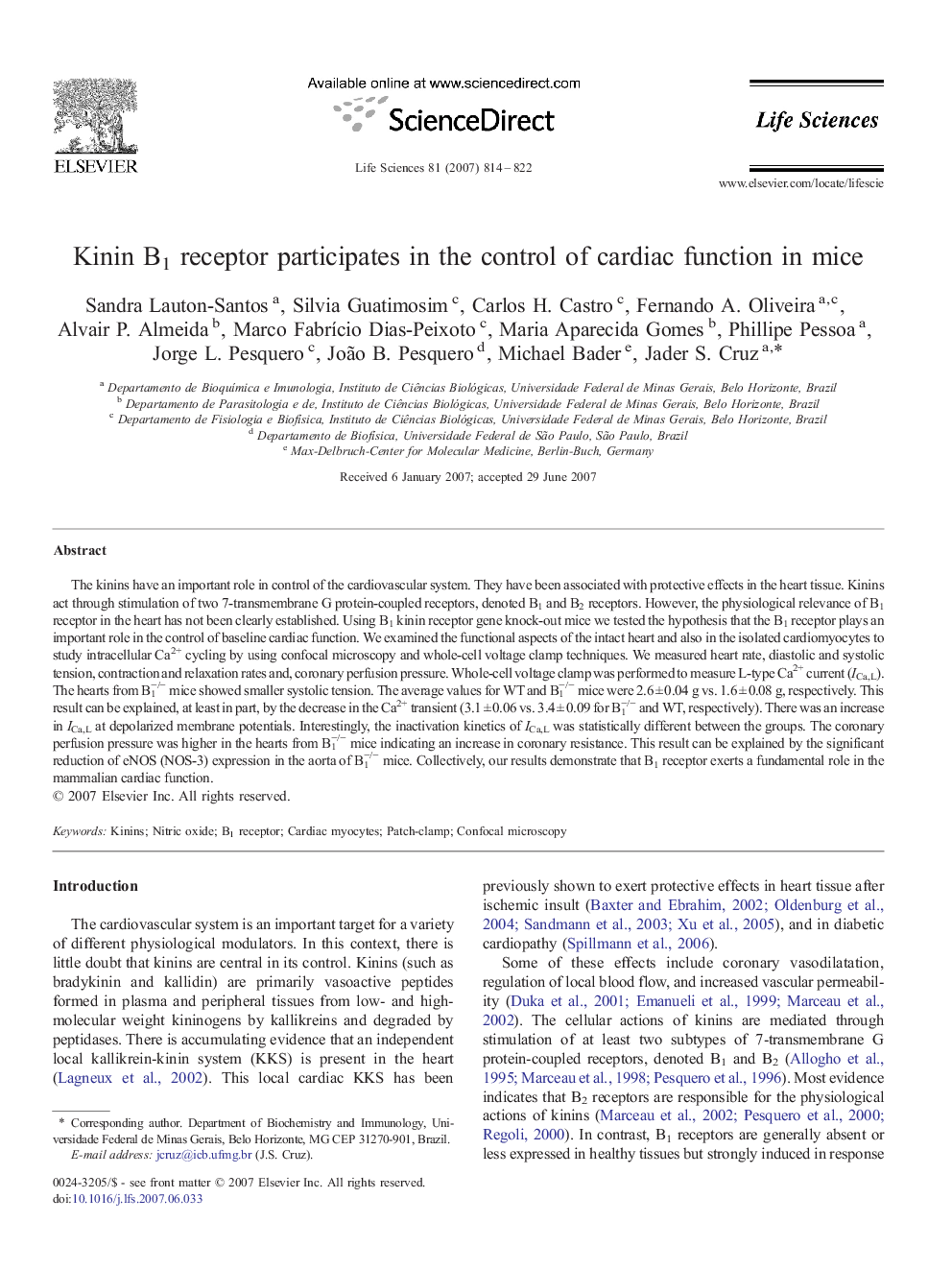| Article ID | Journal | Published Year | Pages | File Type |
|---|---|---|---|---|
| 2553178 | Life Sciences | 2007 | 9 Pages |
Abstract
The kinins have an important role in control of the cardiovascular system. They have been associated with protective effects in the heart tissue. Kinins act through stimulation of two 7-transmembrane G protein-coupled receptors, denoted B1 and B2 receptors. However, the physiological relevance of B1 receptor in the heart has not been clearly established. Using B1 kinin receptor gene knock-out mice we tested the hypothesis that the B1 receptor plays an important role in the control of baseline cardiac function. We examined the functional aspects of the intact heart and also in the isolated cardiomyocytes to study intracellular Ca2+ cycling by using confocal microscopy and whole-cell voltage clamp techniques. We measured heart rate, diastolic and systolic tension, contraction and relaxation rates and, coronary perfusion pressure. Whole-cell voltage clamp was performed to measure L-type Ca2+ current (ICa,L). The hearts from B1â/â mice showed smaller systolic tension. The average values for WT and B1â/â mice were 2.6 ± 0.04 g vs. 1.6 ± 0.08 g, respectively. This result can be explained, at least in part, by the decrease in the Ca2+ transient (3.1 ± 0.06 vs. 3.4 ± 0.09 for B1â/â and WT, respectively). There was an increase in ICa,L at depolarized membrane potentials. Interestingly, the inactivation kinetics of ICa,L was statistically different between the groups. The coronary perfusion pressure was higher in the hearts from B1â/â mice indicating an increase in coronary resistance. This result can be explained by the significant reduction of eNOS (NOS-3) expression in the aorta of B1â/â mice. Collectively, our results demonstrate that B1 receptor exerts a fundamental role in the mammalian cardiac function.
Related Topics
Health Sciences
Medicine and Dentistry
Cardiology and Cardiovascular Medicine
Authors
Sandra Lauton-Santos, Silvia Guatimosim, Carlos H. Castro, Fernando A. Oliveira, Alvair P. Almeida, Marco FabrÃcio Dias-Peixoto, Maria Aparecida Gomes, Phillipe Pessoa, Jorge L. Pesquero, João B. Pesquero, Michael Bader, Jader S. Cruz,
